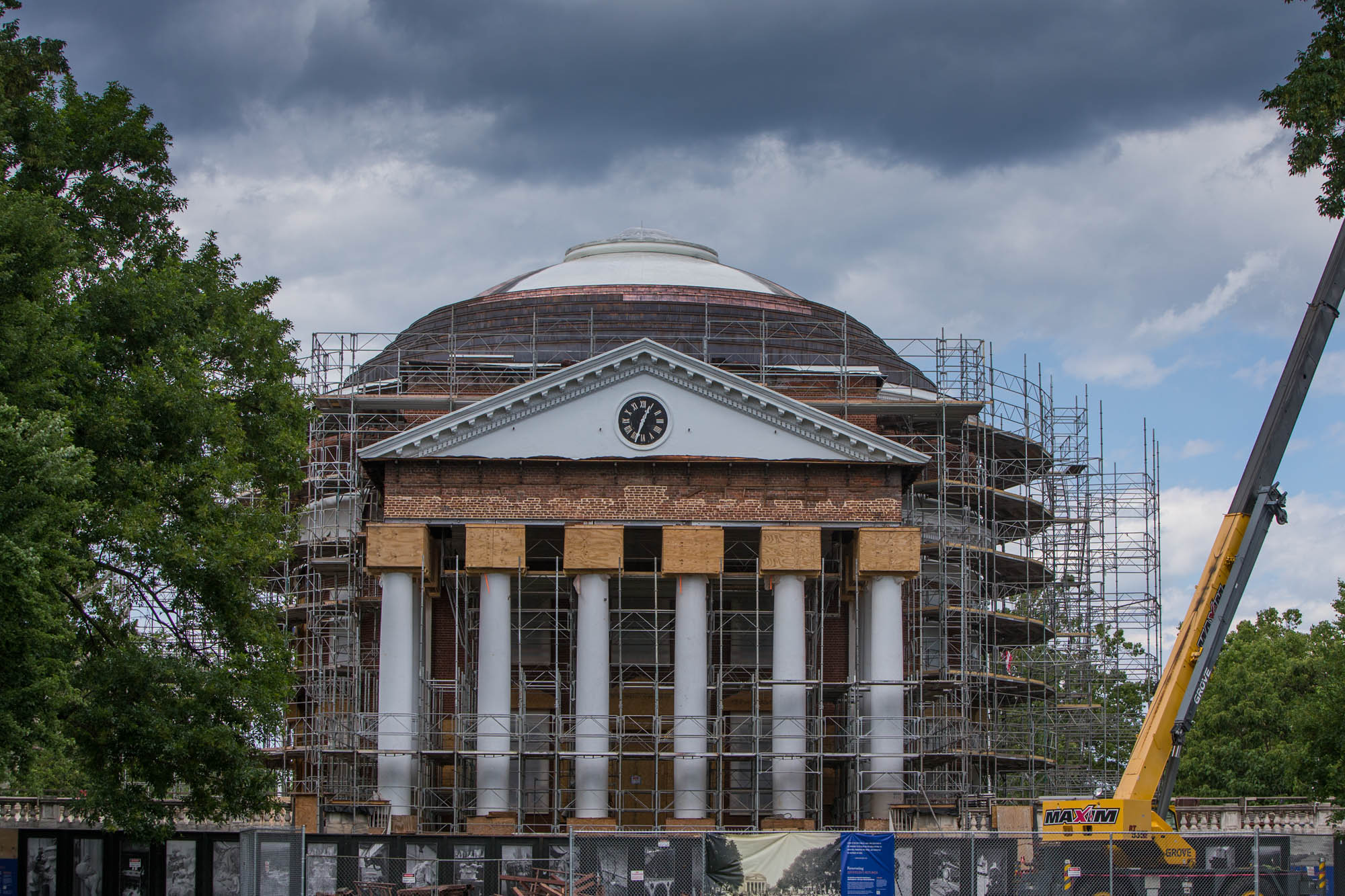At long last, the dome painting has begun on the University of Virginia’s iconic Rotunda.
Workers with American Stripping Company of Manassas started buffing a section of the copper dome and applying a coat of primer last week, to be followed by a finishing coat this week. The renovated dome, which was completed in 2013, is being painted a shade of white that matches the hue the dome was painted in 1976, and also the color used on the building’s window trimmings and doorframes.
The color of the paint – technically a “fluoropolymer paint system” – was selected after research by U.Va. architectural conservator Mark Kutney and Susan Buck of Williamsburg, a conservator and paint analyst.
The Rotunda’s roof has sported many different looks over its nearly two-century history. Thomas Jefferson’s original dome was covered with tin-coated sheet-iron shingles that had a chalky-white patina. Later, red paint was used as a waterproofing on the metal shingles.
Stanford White, the famous New York City architect who was brought to the University in 1896 to re-envision the Rotunda after it was heavily damaged by fire, called for the copper dome he designed to be painted white. But it never was; instead, White’s dome corroded to a patina of soft greenish-white, depending on how the light struck it.
The copper dome was replaced with steel panels during the 1976 renovation, and those panels were painted white – and remained that way until the current round of renovations, when the roofing was again replaced with copper.
The process for painting the roof is painstaking. Prepping, priming and painting must be performed in completely dry conditions in temperature a range of 60 to 100 degrees Fahrenheit, as long as it is at least 5 degrees above the dew point (the point at which water condenses at the same rate it evaporates).
The copper must first be burnished with scouring pads attached to power tools to remove all tarnish. Soldered joints are scoured by hand; no chemicals are employed. The workers use shade screens to keep the copper from getting too hot.
“The copper has to be between 60 and 100 degrees,” said Jody Lahendro, historic preservation architect for Facilities Planning & Construction. “They have to be very careful when they burnish and prime it that is dry. Every morning they go up there with leaf blowers to clean off all the dust and accumulated standing water.”
If it rains after a primer coat has been applied, then the painters must wait until it is completely dry before applying the finishing coat. Moisture can lead to dimples or puckers in the primer coat, necessitating stripping the dimpled area down to the copper and redoing it, he said.
“When they are working, they pay close attention to the radar,” Lahendro said. “On Friday, they finished up about 11 a.m. because they knew there was a storm coming in during the afternoon.”
Workers will prepare, prime and apply the finish paint coats in sections, from the top of dome downward, with as many as eight workers at a time on the roof. The prepping and priming will be done the same day, with final coat of paint applied within 12 hours to seven days afterward, depending on weather. Both primer and finish paint will be spray applied.
The whole process is expected to take fewer than 30 working days.
Media Contact
Article Information
June 16, 2015
/content/workers-begin-painting-dome-uva-s-rotunda

